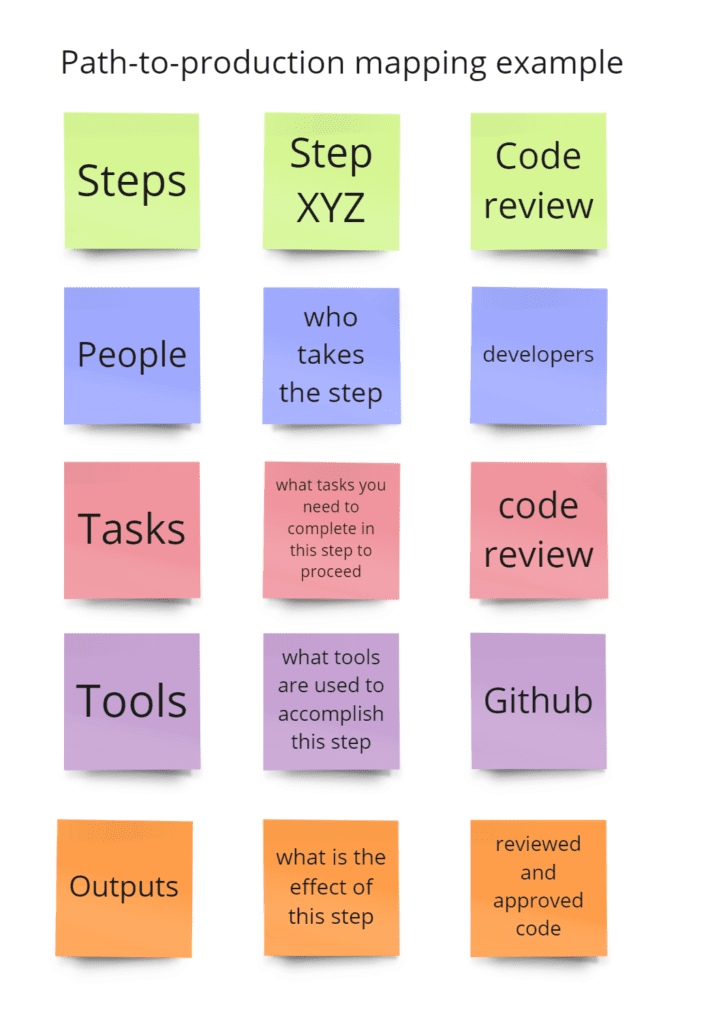
Have you ever felt frustrated with failed deployments? Have you ever wondered why some projects are hugely successful while others sink into chaos and delays? Get ready to discover a key benefit that will change your approach to project development. You will learn to effectively map the path to production to find weaknesses in your development and deployment process. This simple technique will allow you to reduce risk, increase efficiency, and achieve success at the highest level.
In the 27th edition of the Technology Radar (by ThoughtWorks), the technique known as path-to-production mapping was recommended for adoption, meaning it is worth considering for use in your project or organization.
What is path-to-production mapping?
The path-to-production mapping technique identifies software deployment errors, risks, and uncertainties. The initiative takes the form of workshops (either whiteboard or remote, e.g., on Miro) and involves all team members:
-
designers
-
programmers
-
architects
-
deployment personnel
-
product owners
-
system users
-
all others involved in the project
During these workshops, participants can see the software deployment process, from a developer’s computer to a functioning production system. If you want to optimize the time it takes to deploy new code to production (Release Lead Time), such workshops can help.
Formula of workshops

The path-to-production mapping workshop formula may look like this:
-
A selected person presents step by step what stages new code must go through from its inception to when it runs in production.
-
The other participants add notes to each step divided into several categories, such as:
- people - who perform the step
- tasks - what tasks need to be performed in this step to move forward
- tools - what tools are used to carry out this step
- outputs - what is the result of this step
Summary
Summing up, path-to-production mapping is a technique that allows you to find:
-
risks
-
errors
-
uncertainties
-
areas for optimization
In the process of implementing software for production. To accomplish this, the entire team meets at workshops and, observing the software’s path from the developer’s computer to production provides their feedback.

 Github
Github
 Linkedin
Linkedin